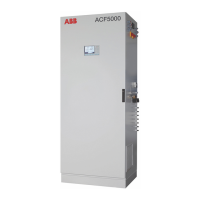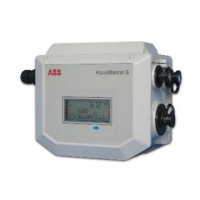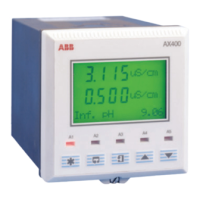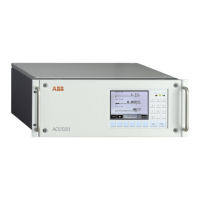42/24-10 EN Rev. 9 Chapter 3: Gas Line Connection 3-13
Gas Line Connection
CAUTION!
The lines and fittings must be free of any residues (e.g. particles left over
from manufacturing). Contaminants can enter the analyzer and damage it or
lead to false measurement results.
• Gas port installation is described in Chapter 2, “Gas Connections Installation”
section.
• Follow the fittings manufacturer’s installation instructions. Be sure to use a
backup wrench when tightening gas line threaded connections.
• Follow the manufacturer’s instructions when laying and connecting the sample
gas line.
• If gas lines made of high-grade steel are connected to the analyzer modules
with a direct measuring chamber connection, the lines also need to be
connected to the building-side equipotential bonding.
• Never connect more than three analyzer modules in series.
Gas Line Connection Connect the gas lines – made of a material appropriate for the measurement task –
to the installed gas ports.
Evacuate
Exhaust Gases
Exhaust gases should be routed to the atmosphere or to an exhaust pipe directly
or via the shortest possible large-diameter line. Do not route exhaust gases via
flow reducers or shutoff valves.
Process corrosive, toxic or combustible exhaust gases in an appropriate manner.
Provide for Gas Line
System Flushing
Install a shutoff valve in each gas inlet line (this is definitely recommended for
pressurized gases) and provide a means of flushing the gas line system via the
sampling port with an inert gas, e.g. nitrogen.
Flow Meter
Installation in the
Reference Gas Line
In the Caldos25 and Uras26 versions with flowing reference gas a flow meter
with a needle valve must be installed in the sample gas line and in the reference
gas line in order to adjust the flow rate in the two lines to the optimum value.
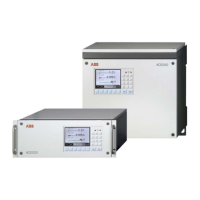
